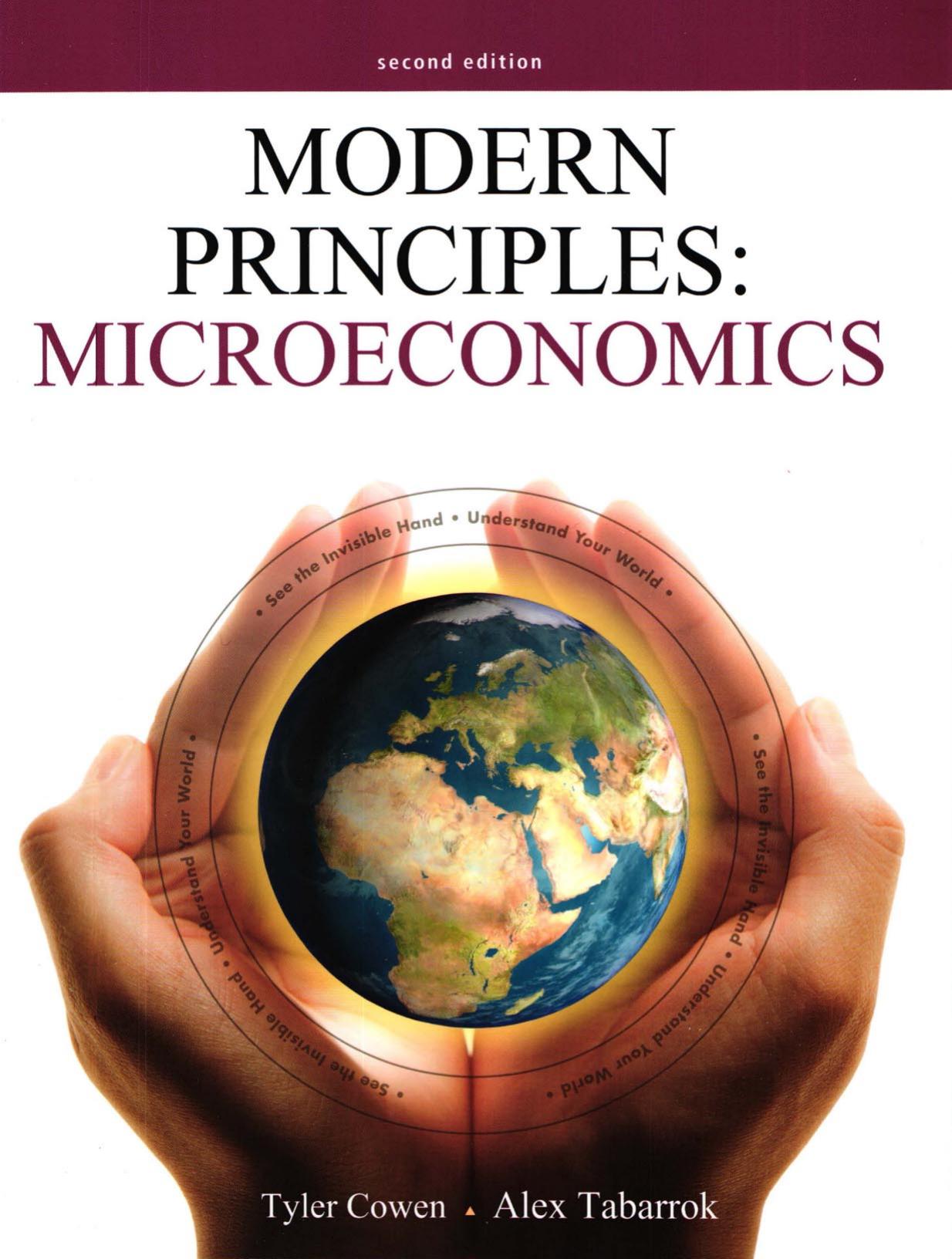Modern Principles of Microeconomics 2nd Edition
$70.00 Original price was: $70.00.$35.00Current price is: $35.00.
Modern Principles of Microeconomics 2nd Edition by Tyler Cowen, Alex Tabarrok 1429239999 978-1429239998
Instant download Modern Principles of Microeconomics 2nd Edition pdf, docx, kindle format all chapters after payment.
Product details:
- ISBN 10: 1429239999
- ISBN 13: 978-1429239998
- Author: Tyler Cowen, Alex Tabarrok
Modern. Simpler. These were our goals. We knew that to reflect modern macroeconomics we had to cover the Solow Model and the economics of ideas, Real Business Cycles, and New Keynesian economics. While most texts now cover the rudiments of economic growth, the importance of ideas is rarely even mentioned. Similarly, other texts do not offer a balanced treatment of Real Business Cycle theory and New Keynesian theory, instead favoring one theory and relegating the other to a few pages that are poorly integrated with the overall macro model. We also knew that our efforts to reflect modern macroeconomics would be wasted if we reached only a small percentage of the students. We had to make the material simpler, more compelling, and more intuitive. By boiling the Solow model down to its essence and by providing multiple paths through the material, we have made it accessible to all principles students. Our modern approach to business fluctuations is also simpler and yet more advanced at the same time. It is simpler because we model business fluctuations as fluctuations in the growth rate of output, rather than in the level of output. That creates a natural progression from growth theory to business fluctuations. It is simpler because we develop our balanced approach to Real Business Cycles and New Keynesian economics within a single, unified dynamic AD-AS model. And no other textbook offers the same depth of analysis of monetary and fiscal policy in response to both real and nominal shocks. That’s why we call our text Modern
Table contents:
Chapter 1: The Big Ideas
Chapter 2: Supply and Demand
Chapter 3: The Elasticity of Demand
Chapter 4: Taxes and Subsidies
Chapter 5: Price Ceilings and Floors
Chapter 6: International Trade
Chapter 7: Externalities
Chapter 8: Public Goods and the Tragedy of the Commons
Chapter 9: Costs and Profit Maximization under Competition
Chapter 10: Competition and Monopoly
Chapter 11: Price Discrimination
Chapter 12: Oligopoly and Game Theory
Chapter 13: The Economics of Information
Chapter 14: Labor Markets
Chapter 15: Poverty, Inequality, and Discrimination
Chapter 16: Consumer Choice
Chapter 17: Behavioral Economics
People also search:
principles of microeconomics
difference between microeconomics and macroeconomics
ap microeconomics practice test
microeconomics is the study of
microeconomics examples


